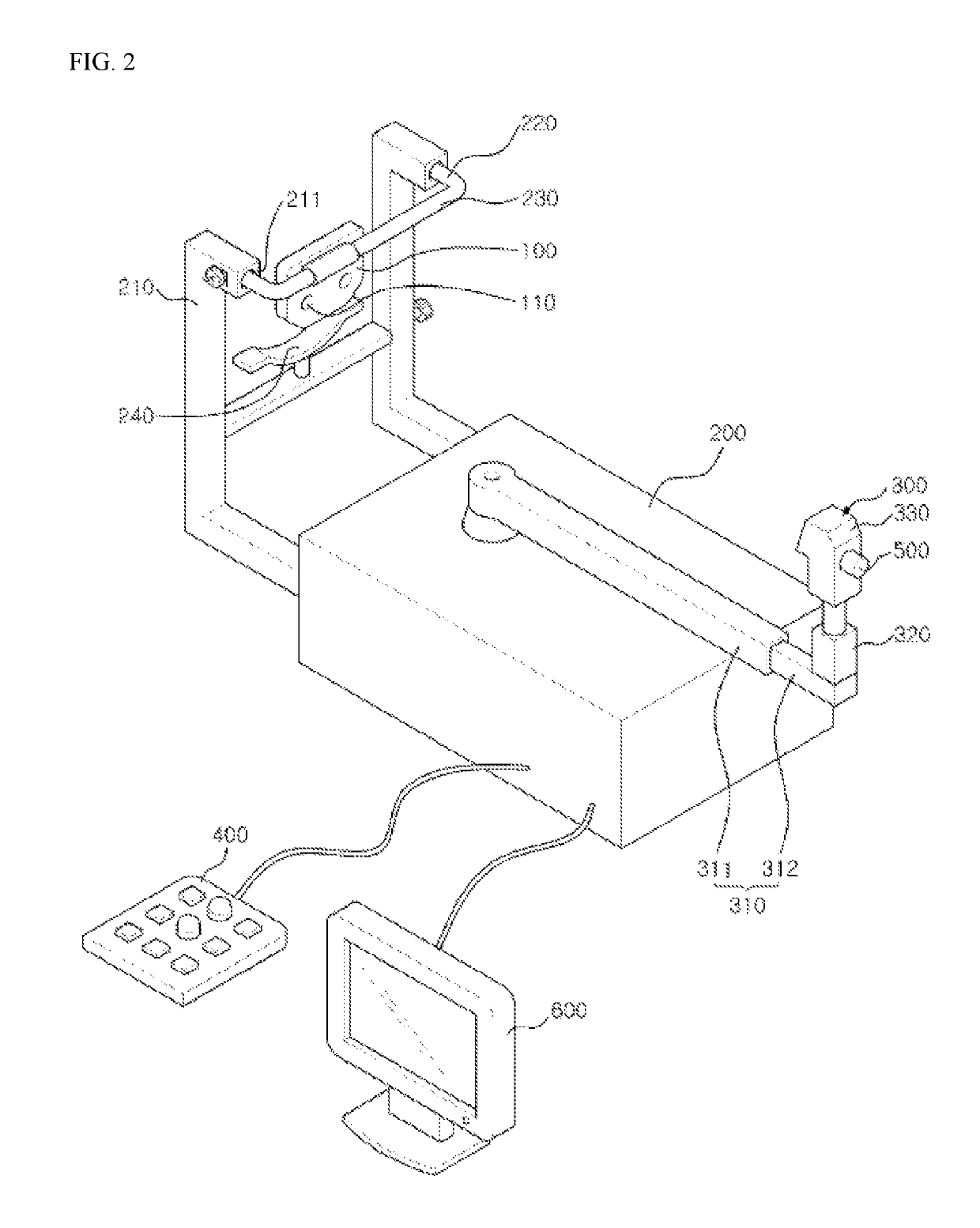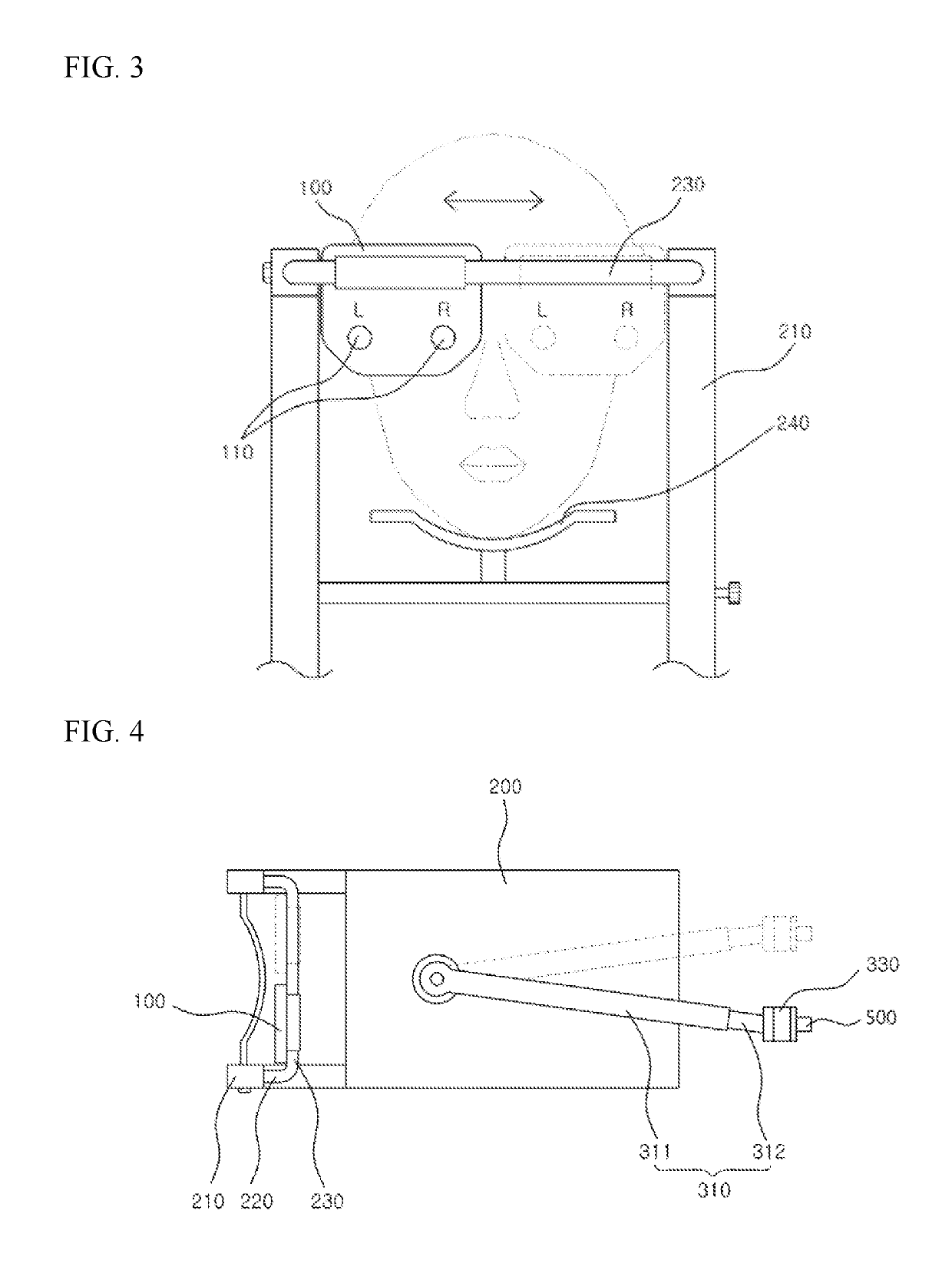Apparatus for retinoscopy
a technology of retinoscopy and apparatus, which is applied in the field of retinoscopy, can solve the problems of difficult observation of reflected light beams, difficult to perform accurate examinations, and errors, and achieve the effects of minimizing spherical aberration, improving convenience of examination, and accurately identifying
- Summary
- Abstract
- Description
- Claims
- Application Information
AI Technical Summary
Benefits of technology
Problems solved by technology
Method used
Image
Examples
Embodiment Construction
[0039]The above objectives, features, and other advantages of the present invention will become more apparent by describing in detail exemplary embodiments thereof in connection with the accompanying drawings. Hereinafter, exemplary embodiments of a retinoscope of the present invention will be described in detail with reference to the accompanying drawings. For this description, like reference numerals are used for like components unless otherwise described.
[0040]FIG. 2 is a perspective view illustrating a retinoscope according to one embodiment of the present invention, FIG. 3 is a front view illustrating a state in which a refractor of the retinoscope according to one embodiment of the present invention is moved laterally, and FIG. 4 is a plan view for describing a rotating member of a retinoscope part in the retinoscope according to one embodiment of the present invention. Further, FIG. 5 is a cross-sectional view schematically illustrating the retinoscope part in the retinoscope...
PUM
 Login to View More
Login to View More Abstract
Description
Claims
Application Information
 Login to View More
Login to View More - R&D
- Intellectual Property
- Life Sciences
- Materials
- Tech Scout
- Unparalleled Data Quality
- Higher Quality Content
- 60% Fewer Hallucinations
Browse by: Latest US Patents, China's latest patents, Technical Efficacy Thesaurus, Application Domain, Technology Topic, Popular Technical Reports.
© 2025 PatSnap. All rights reserved.Legal|Privacy policy|Modern Slavery Act Transparency Statement|Sitemap|About US| Contact US: help@patsnap.com



